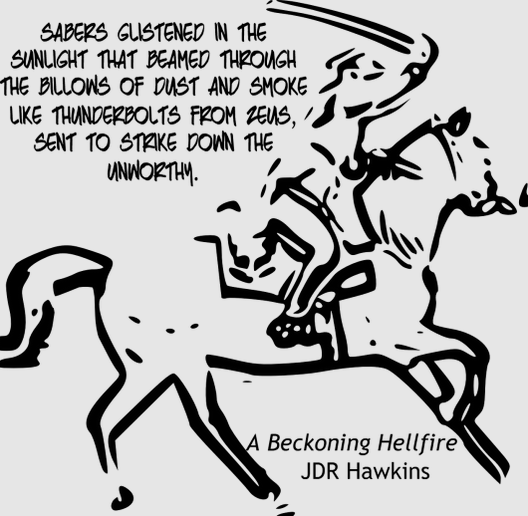Historical fiction Civil War books offer readers a profound insight into one of America's most defining and devastating conflicts. These novels not only recount the events of the war but also delve deeply into the human experiences on both sides of the divide. Among the authors who have mastered this delicate balance is J.D.R. Hawkins, an Amazon, USA Today, and Wall Street Journal bestselling author. Her "Renegade Series" uniquely portrays the Civil War from a Confederate perspective, bringing to life the nuanced and often overlooked aspects of Southern experiences.
Capturing the Confederate Perspective
J.D.R. Hawkins’ "Renegade Series" is notable for its focus on the Confederate side of the Civil War, providing a viewpoint less frequently represented in popular literature. This perspective is crucial for a comprehensive understanding of the conflict. Books like "A Beautiful Glittering Lie" and "A Beckoning Hellfire" delve into the lives of Confederate soldiers and their families, illustrating their complex motivations and immense struggles.
Hawkins portrays her characters with empathy, showing that many Confederate soldiers were driven by a sense of duty, honor, and loyalty to their homeland rather than a monolithic commitment to the institution of slavery. For instance, David Summers, the protagonist in several of her novels, embodies many Southern soldiers' internal conflicts and evolving consciousness. His journey from eager combatant to a war-weary survivor offers readers a nuanced view of the Confederate experience.
Highlighting the Union Perspective
While Hawkins’ series primarily focuses on the South, many historical fiction Civil War books balance this by incorporating perspectives from the Union side. This approach ensures a rounded portrayal of the war, reflecting the diversity of experiences and viewpoints that characterized the period. Union soldiers, their families, and abolitionist supporters are depicted with as much detail and empathy as their Confederate counterparts.
For example, "A Rebel Among Us" introduces Northern characters who encounter the war-torn South, creating a bridge between the two perspectives. This inclusion allows readers to see the complexities of the Union cause, including the internal political debates, the moral imperatives driving the fight against slavery, and the personal sacrifices made by Union soldiers and their families.
Exploring Common Themes and Shared Experiences
One of the strengths of historical fiction Civil War books is their ability to highlight the shared experiences and common humanity on both sides of the conflict. Themes of loss, courage, and resilience are universal, transcending the divide between North and South. By focusing on these shared human experiences, authors like Hawkins help readers understand that, despite the ideological chasm, soldiers and civilians on both sides endured similar hardships and emotional turmoil.
In "Double-Edged Sword," Hawkins vividly portrays the post-war struggles of returning soldiers and their families. This theme resonates regardless of allegiance. The physical and psychological scars of war, the challenges of rebuilding lives, and the quest for
redemption are depicted in a way that emphasizes the universality of suffering and recovery in the aftermath of conflict.
Addressing Historical Complexity
Accurately portraying the Civil War requires acknowledging its historical complexity. Simplistic narratives that paint one side as entirely right or wrong do a disservice to the nuanced reality of the period. Historical fiction Civil War books that succeed in this genre often include various perspectives and voices, ensuring a more balanced and truthful representation.
Hawkins’ meticulous research and dedication to historical accuracy are evident in her work. Her novels incorporate real events and figures seamlessly into the fictional narrative. This commitment to detail ensures that the war's broader political, social, and economic contexts are adequately represented, providing readers with a comprehensive understanding of the era.
Personal Stories and Larger Narratives
The most impactful historical fiction Civil War books combine intimate personal stories with larger historical narratives. Authors can explore broader themes and events through a relatable and emotionally engaging lens by focusing on individual characters and their personal journeys. Hawkins excels in this regard, using her characters’ experiences to illuminate the wider consequences of the war.
For instance, in "A Beautiful Glittering Lie," David Summers's personal loss and transformation reflect the widespread devastation and change that the war wrought on Southern society. Similarly, "A Beckoning Hellfire" captures the chaotic and brutal nature of battle while also delving into the psychological impact on those who fought.
Summary
Historical fiction Civil War books, like those in J.D.R. Hawkins' "Renegade Series," play a vital role in portraying the multifaceted nature of the Civil War. These novels provide a more nuanced and empathetic understanding of the war by offering perspectives from both sides of the conflict and emphasizing shared human experiences. Hawkins’ ability to balance historical accuracy with compelling storytelling ensures that her works resonate with readers, offering profound insights into one of the most complex periods in American history. Whether through the lens of a Confederate soldier or a Union supporter, these books remind us of the enduring impact of the Civil War and the importance of understanding all sides of the story.

